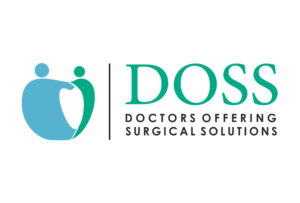Umbilical Hernia Treatment
BlogUmbilical hernia is a common condition that affects both adults and children, causing discomfort and sometimes pain. In today’s blog, we will discuss what an umbilical hernia is, its causes, and the available hernia treatment options to help patients make informed decisions about their health.
What is Umbilical Hernia?
An umbilical hernia occurs when a portion of the intestine or fat tissue protrudes through a weak spot in the abdominal wall, specifically around the navel (umbilicus). This results in a visible swelling or bulge at the belly button.
The hernia tends to be more prominent when there is increased pressure in the abdomen, such as during coughing, lifting heavy objects, or straining. However, it can often be pushed back into the abdomen with gentle pressure.
It is crucial to consult a hernia doctor in Pune if you suspect an umbilical hernia, as it could be indicative of a more severe condition. A sonography is typically recommended to confirm the diagnosis, determine the size of the hernia, and ascertain if it involves the intestine or just the fat layer above it. Additionally, the sonography can help identify any other hernias that may be present in the body.
Umbilical Hernia Treatment - Regain Comfort and Confidence
Don't let your hernia hold you back - take the first step towards a pain-free life and regain your confidence. Doss India Clinics Provides the Best compassionate care with the best Hernia surgeons in Pune.
Call UsSurgery for Umbilical Hernia
Surgery is the only definitive treatment for an umbilical hernia, as there are no medications or other alternatives that can repair the defect in the abdominal wall. There are two primary surgical options available for treating an umbilical hernia:
- Open surgery: In open surgery, the surgeon makes an incision near the hernia site, pushes the protruding tissue back into the abdomen, and repairs the abdominal wall using stitches or a mesh to reinforce the area. This procedure is typically performed under general anesthesia, and recovery time can vary depending on the size and complexity of the hernia.
- Laparoscopy: Laparoscopic surgery is a minimally invasive alternative to open surgery, offering several advantages. The procedure involves making several small incisions in the abdomen through which the surgeon inserts a laparoscope (a thin tube with a light and camera) and specialized surgical instruments. The hernia is repaired using a 3D mesh, which provides strength and support to the weakened abdominal wall.
Laparoscopic surgery typically takes around 30 to 40 minutes, with patients discharged within two days. Most patients can walk within 6 to 8 hours post-surgery, and they require only about 7 days of rest for recovery. The smaller incisions and absence of stitches make laparoscopic surgery a more cosmetically appealing option, as there is minimal scarring.
Also, Read- Differences Between Open Surgery and Laparoscopy Surgery
Conclusion
Umbilical hernias are a common medical condition that requires surgical intervention for effective treatment. While open surgery is a traditional approach, laparoscopic surgery offers patients a minimally invasive option with quicker recovery times and minimal scarring.
If you suspect that you or a loved one has an umbilical hernia, it is essential to consult a medical professional for an accurate diagnosis and to discuss the most suitable treatment option. Please feel free to reach out if you have any questions or concerns about umbilical hernias and their treatment.


 +919011100010
+919011100010 


